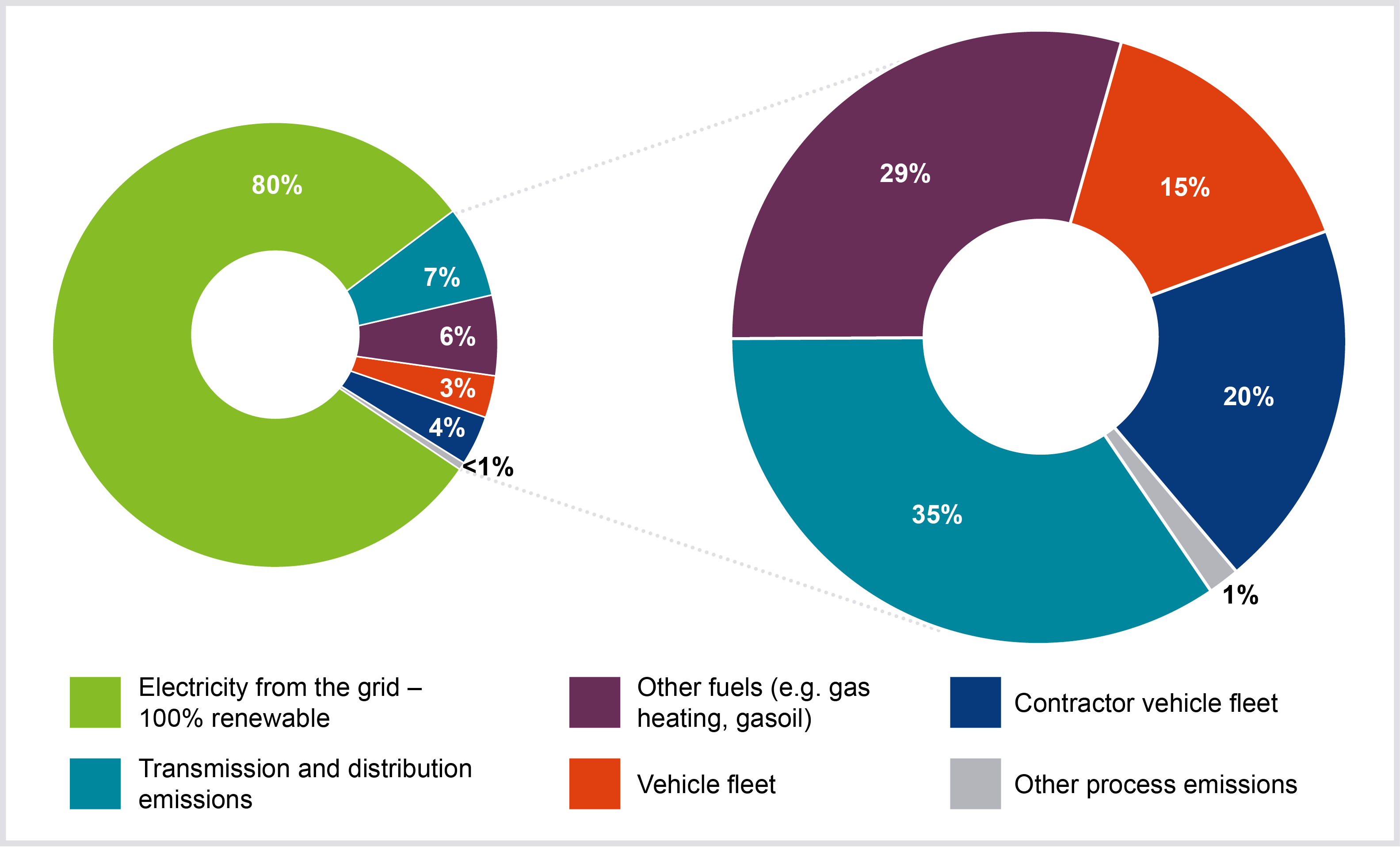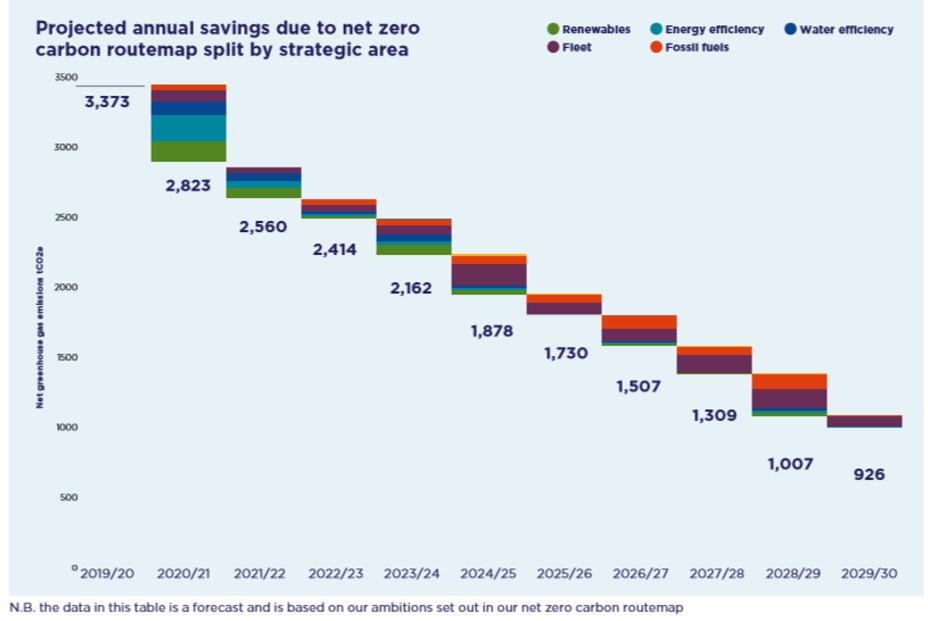Our carbon footprint
What makes up our carbon footprint?
Our operational carbon footprint is made up of emissions from six areas:
- Electricity from the grid
- Transmission and distribution emissions
- Other fuel use (gas heating, gasoil)
- Vehicle fleet
- Contractor vehicle fleet
- Other process emissions
The diagram below shows how much each contributes to our operational carbon emissions. The majority of our emissions come from the electricity we purchase to run our operations. However, since 2018 we have relied entirely on renewable electricity backed by Renewable Energy Guarantee of Origin certificates (REGO). This means that renewable electricity generated in the UK is allocated specifically against our consumption by registering the certificates with Ofgem in our name. This certification scheme helps to drive further investment in renewable generation in the UK, particularly from generators who don't have direct relationships with end users.

We categorise our operational carbon emissions in the three scopes defined by the Greenhouse Gas Protocol.
| Scope 1 | Scope 2 | Scope 3 |
| Direct emissions from the burning of fossil fuels; process and fugitive emissions; transport (company owned/ leased vehicles) | Indirect emissions from the generation of purchased electricity, steam, heating and cooling. | Other indirect emissions: business travel (public transport and private vehicles on company business); outsourced activities not in Scopes 1 & 2; Transmission and Distribution of purchased electricity |
Our operational emissions (not including the electricity purchased from renewable sources) are split almost equally between scopes 1 and 3.
Where we hope to be by 2030
By 2030, we want to achieve more than a 70% reduction in operational carbon emissions compared to our 2019/20 emissions. Any residual emissions in 2030 will need to be offset through the purchase of credible, robust carbon offsets. The need for offsetting is a key challenge, our response to which will evolve between now and 2030, in dialogue with stakeholders including Ofwat.
The ambitions we have set are challenging and tackle all sources of emissions within our operational carbon footprint with an equal degree of priority. We believe our route map represents a practical and affordable path to net zero which will involve close working between SES, our customers and our partners. The projected annual savings we expect to make as a result of our net zero carbon route map are show in the graph below:

We expect there to be significant change between now and 2030, both in terms of legislation related to climate change and also in terms of technology development. These changes may make different elements of our routemap more or less feasible or could lead to new opportunities being identified, which are not currently included. For this reason, we will review our routemap annually and revise it as necessary to ensure it remains relevant and realistic.
Future priorities - embodied carbon and carbon sequestration
This route map focuses primarily on reducing our operational carbon emissions, so we achieve net zero carbon by 2030. In addition to these five areas of strategic focus we will continue to work on reducing carbon emissions associated specifically with our capital investment programme – known as embodied carbon. In 2021/22 we will introduce a system to measure capital carbon emissions and will be collaborating with other water companies to develop a robust, comparable reporting methodology so we can all report our progress in this important area. This will lead to more informed decision-making with regards to capital investment and a focus on reducing our embodied carbon emissions.
Carbon sequestration is the term given to the naturally occurring capture and storage of greenhouse gases by land and vegetation. We are a significant landowner and are committed to restoring and improving the biodiversity found on our sites.
Simultaneously we are developing projects to sequester larger amounts of carbon through sustainable agriculture practices on our landholdings. This will have a longer-term impact on carbon emissions beyond the 2030 net zero timeframe.
